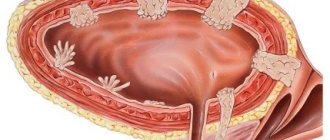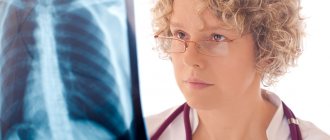In the list of diseases of the digestive system, doctors also name gallbladder cancer. Despite the rarity of this disease (only 20% of cases are from cancerous tumors of the entire digestive system), this diagnosis is scary due to long treatment and the absence of symptoms at an early stage.
People who have already faced such a diagnosis certainly have numerous questions. How to identify oncology in the initial stages? How long do people live with stage 4 gallbladder cancer? Is it possible to completely get rid of the disease? These questions are extremely important, so all aspects of diagnosis and treatment should be sorted out in order.
Basic Concepts
What exactly is the gallbladder? It is a fairly small organ, shaped like a bean. It is located in the lower part of the liver. The main task of the gallbladder is to store bile, a special secretory fluid that is involved in the digestion of food.
Gallbladder cancer is an oncological disease. It is characterized by the appearance of pathological cells in the tissues of the organ. Over time, these cells begin to grow and divide, forming a tumor. This tumor blocks the proper functioning of the gallbladder and neighboring organs. The code for the international classification of diseases of gallbladder cancer (ICD-10) is C23.
It has been noticed that the female half of humanity is more susceptible to this disease: according to statistics, there are almost twice as many women with this diagnosis as men. Thus, in 2013, in Russia, tumors of the extrahepatic bile ducts were identified in 2180 women and 1122 men (separate data on the gallbladder are not available).
As for age categories, the majority of patients are people over 50 years old. Although doctors note: over the past decade, gallbladder cancer has been increasingly diagnosed in people 30 years of age and older. Cases of the disease in children have also been identified, but they are isolated.
What is the difficulty of diagnosis and treatment? The main reason is that patients apply mainly in the last stages of the disease. This makes treatment much more difficult.
Reasons for the development of gallbladder cancer
Scientists cannot name specific reasons that trigger the development of atypical cells. However, constant monitoring of statistics has made it possible to identify factors that may increase the risk of gallbladder cancer:
- These are various diseases of the gallbladder of an inflammatory nature, the presence of stones. 85% of patients with this type of cancer had problems with the gallbladder in the past. These include chronic inflammation of the organ and stones. It has been noted that the larger the size of the stones in the gall bladder, the higher the risk of developing a malignant tumor.
- Constant contact with certain substances. Among the patients there are many workers in hazardous industries (rubber or metallurgical industries). This is explained by the high concentration of chemicals.
- Bile duct cyst. This pathological phenomenon is often called precancerous. The fact is that a cyst is a neoplasm filled with bile. Under certain conditions, the cyst can increase in size, after which it degenerates into a malignant tumor and exhibits symptoms of gallbladder cancer. At the first suspicion of a cyst, you should go to the clinic as soon as possible.
- “Porcelain” gallbladder. This medical term is used to define the pathological condition of the organ, in which all the walls of the gallbladder are covered with calcium deposits. This condition occurs during severe inflammatory conditions. Traditionally, the affected organ is removed, as it often becomes the cause of cancer.
- Typhoid fever. Today, infection with typhoid fever is an extremely rare phenomenon, but if it occurs, the patient’s risk of developing signs of gallbladder cancer increases almost 6 times.
- Age-related changes. In the body of absolutely every person, irreversible phenomena occur at the cellular level with age, which can provoke the growth of atypical cells. This is fully confirmed by statistics: most of the patients belong to the category of elderly people.
- Bad habits. The list can include smoking, excessive drinking of alcoholic beverages, and poor nutrition.
Causes
Malignant tumors of the hepatobiliary system often occur in old age against the background of chronic calculous cholecystitis. Men are more susceptible to this type of cancer.
Among the reasons why a tumor occurs in the gallbladder are the following:
- stagnation and thickening of bile;
- stone formation;
- constant irritation and damage to the bladder wall;
- inflammation, including caused by infection;
- processes of dysplasia and regeneration.
The appearance of a neoplasm is largely due to unfavorable heredity. Scientists have found that in patients with cholelithiasis, in whose anamnesis there is an indication that close relatives suffered cancer of the hepatobiliary system, a gallstone tumor occurs 2 times more often.
Factors that cause gallbladder cancer are the following:
- nutritional errors (excess of refractory saturated fats, lack of proteins, deficiency of vitamins);
- stress in any of its manifestations;
- alcohol abuse;
- helminthic infestations;
- smoking, especially in combination with poor nutrition;
- long-term use of medications (antispasmodics, anabolic steroids, sleeping pills, tranquilizers);
- physical impact (shaking, abdominal exercises);
- infections (tonsillitis, hepatitis, caries);
- diseases of the gastrointestinal tract.
Constant irritation of the mucous membrane triggers the processes of replacing damaged tissue. When this mechanism fails, abnormal cell growth occurs, which is characterized by the appearance of a tumor.
Tumor histology
Gallbladder cancer is usually divided into several categories, taking into account certain characteristics.
According to the histological structure of cells, several types of tumors are distinguished:
- squamous cell carcinoma - a tumor that occurs in the epithelial layer and mucous membrane;
- adenocarcinoma - such a neoplasm appears from glandular cells located in the epithelium of the organ;
- scirrhosous;
- solid - from the Latin word solidum (solid), such a tumor is a group of cells arranged in plates;
- poorly differentiated - cells of such cancer often have irregularly shaped nuclei and an abnormal structure.
Etiology of pathology
The exact causes of gallbladder cancer have not yet been established, since it has not been sufficiently studied. However, the presence of the following diseases may predispose to the development of this pathology:
- chronic cholelithiasis – due to prolonged manifestation of epithelial tissue dysplasia and its trauma;
- sclerosing cholangitis;
- chronic cholecystitis;
- cirrhosis of the liver of a biliary nature;
- with fibrosis and congenital polycystic liver disease;
- adenomatous polyps in the gallbladder, with a diameter exceeding 1 cm.
Most often, an oncological tumor develops in the gallbladder damaged by calcifications. Due to injury to the mucous membrane by stones, carcinogenesis develops. Also, diseases that cause a predisposition to cancer include salmonellosis, calcinosis, and Helicobacter pylori infection.
Tumor localization
According to the location of the malignant neoplasm, there are 2 types of gallbladder cancer:
- Localized. This is the type of tumor that is located within the gallbladder itself and does not affect nearby tissues and organs at all. Most often, this picture is observed at the very beginning of the development of gallbladder cancer. The treatment prognosis is quite optimistic.
- Inoperable. This category includes those tumors that have already metastasized. What it is?
Metastasis is the spread of malignant cells from the primary site (in this case, from the gallbladder) to various other tissues and organs of the human body. Most often, metastases of gallbladder cancer spread to the lymphatic system, liver, intestines, and stomach.
Nutrition
The diet for gallbladder cancer should consist of gentle nutrition, which should not put too much strain on either the liver or the organ itself. It is very important not to eat foods that provoke the production of bile:
- vegetable oils: sunflower and olive;
- bran;
- vegetables (especially avacado) and vegetable broths;
- fruits: oranges, tangerines, pears, prunes, lemons, melons and watermelons;
- beet, cabbage, lingonberry juices;
- spice turmeric;
- greens: dill, celery, rhubarb, spinach.
Recommendations:
- You should not eat fatty, salty, spicy and fried foods first.
- Meals should be taken in small portions five or six times a day.
- You should switch to eating easily digestible proteins and fiber.
- It is also worth monitoring the rational intake of vitamins and microelements that support the immune system and the activity of all organs of the human body.
The diagnosis of gallbladder cancer is quite a serious challenge for the patient, but in some cases this disease can be overcome with the right approach to therapy. It is very important to pay attention to the first signs of the disease in time, without ignoring the onset of the development of the pathological process.
Stages of malignant neoplasm of the gallbladder
For a more convenient classification and description of pathological processes occurring in the human body, it is customary to differentiate gallbladder cancer at the following stages:
- Stage 0 - it is often called precancerous. At this time, pathological cells are on the mucous membrane of the organ, and the size of the tumor is quite small. Starting treatment at stage 0 allows you to completely get rid of the disease, but diagnosing such oncology is extremely difficult - there are no symptoms at all.
- Stage 1. Malignant cells penetrate not only into the mucous membrane, but also into adjacent layers of tissue. The diameter of the tumor also increases. At this stage, the first symptoms of gallbladder cancer may appear, but they are practically invisible. In most cases, detection of the disease at this stage occurs during a medical examination prescribed for other reasons.
- Stage 2 (moderate severity). This stage includes the period of active tumor growth. By this time, the neoplasm reaches an impressive size, but does not extend beyond the gallbladder. The symptoms are becoming more and more vivid.
- Stage 3. It is at this stage of tumor development that many patients come to the clinic, as pronounced persistent symptoms appear. By this time, the tumor is already giving nearby metastases.
- Stage 4. Gallbladder cancer at this stage has several characteristics. These are the large size of the tumor, damage to nearby tissues (that is, metastases to other organs), the presence of a large number of symptoms of the disease, and low susceptibility of the tumor to treatment.
Treatment
At this stage of medical development, there are only four main methods of combating gallbladder cancer:
- Surgical intervention
Most often, tumor removal through surgery is performed using a laparoscope. That is, a large invasive intervention with opening the abdominal cavity is not required. In this case, the gallbladder itself is removed, and often also regional lymph nodes, which may contain metastases.
- Irradiation
Radiation therapy is currently used quite widely. It is a directed high-frequency X-ray radiation that kills cancer cells. It can be carried out both externally and internally in the human body.
- Chemotherapy
Chemotherapy can also achieve the destruction of cancer cells or slow down their division. For this purpose, special cytostatic drugs are used. The type of their administration directly depends on the stage of development of the disease.
- Radiosensitizers
The use of radiosensitizers is explained by the fact that these drugs increase the susceptibility of the tumor to radiation exposure. That is, with the help of these substances it is possible to achieve a better course of therapy using radiation.
Separately, we can also distinguish the category of people who participated in experimental methods of treating this disease. Most often, they are aimed at improving existing methods.
Clinical picture
The main thing that distinguishes cancer from many others is the complete absence of symptoms in the early stages. This is the main problem that explains why many patients visit a doctor late.
In addition, many symptoms of gallbladder cancer are very similar to the manifestations of some other non-oncological diseases (for example, chronic cholecystitis). However, it is not at all necessary that all symptoms appear - they can vary depending on the type of cancer and its location.
Some of the first symptoms of gallbladder cancer include:
- pain in the right side of the abdomen under the ribs (at first the pain appears quite rarely and is short-term, but intensifies as the tumor grows);
- bloating and feeling of heaviness;
- the appearance of frequent attacks of nausea, possible vomiting;
- stool disorders (flatulence may suddenly give way to constipation);
- lack of appetite or its significant decrease.
If at this stage a person does not see a doctor and treatment is not started, the tumor continues to progress. A little later, symptoms of gallbladder cancer appear, such as:
- pain in the right precostal area becomes more frequent and lasts longer, it can radiate throughout the abdomen, into the back, neck or shoulder;
- severe nausea ends with vomiting, but even this does not bring relief;
- tumor growth leads to an increase in the size of the gallbladder - as a result of this, the enlarged liver can be felt independently;
- a slightly yellowish tint to the skin appears;
- burning and itching of the skin is observed;
- there is shortness of breath (not only after physical activity, but even at rest);
- appetite may be good or absent altogether, while body weight decreases sharply;
- prolonged maintenance of high body temperature (from 37 to 39 degrees);
- fatigue, feeling of weakness, apathy.
Another characteristic sign may be a change in the color of urine and feces. Urine becomes darker, and feces, on the contrary, become lighter.
Symptoms
The main symptom of gallbladder cancer is often yellowing of the skin and sclera of the eyes. In addition, it is important to highlight some other signs of this disease, if they occur, you should definitely contact a medical facility:
- pain in the upper abdomen;
- high body temperature;
- nausea and vomiting;
- bloating;
- the presence of a pathological formation in the abdomen.
Most often, it is impossible to notice the onset of the disease. This is due to the fact that the symptoms are subtle or are completely disguised as symptoms of other diseases. The main evidence of cancer is often a dull, occasional pain. It is associated with the growth of metastases into nearby lymph nodes.
Patients often experience gastrointestinal disorders - loss of appetite, dyspepsia and weight loss. Jaundice manifestations occur only in half of all cases. Some patients develop ascites and anemia.
Initial examination of patients
The long absence of symptoms at stage 1 of gallbladder cancer leads to the fact that in 70% of cases patients go to the clinic when the tumor has already reached a significant size and requires long-term complex treatment.
To prescribe the most effective course of therapy, the doctor needs to obtain a complete picture of the disease. To do this, he prescribes a number of tests and also conducts:
- Complete examination of the patient. At the initial appointment, the doctor needs to obtain as much information as possible from the patient’s words. This will allow you to judge the intensity of the symptoms. Based on this, the severity of the current illness can be assumed.
- Familiarization with the characteristics of the patient’s life and the history of his illness. Such details allow us to judge the risk of developing cancer.
- Physical examination. This concept includes examining the patient, measuring body temperature, palpating the liver area (for an increase in the size of the organ), examining the skin and eye sclera for the presence of a yellowish tint.
Preventive measures
There are no special preventive measures to prevent this disease. This is primarily due to the fact that the causes of the pathology are unknown. However, you can reduce the possibility of the disease occurring by adhering to simple rules: monitor your weight, diet, excluding harmful foods, get rid of bad habits, play sports, spend time in the fresh air, and maintain a daily routine. If there are chronic inflammatory processes in the gallbladder, then you need to consult a doctor to prescribe treatment.
Laboratory research
Laboratory tests will not reveal gallbladder cancer, but the test results will clearly indicate the pathological condition of a particular organ.
The following analyzes are carried out:
- General urine analysis.
- Stool analysis (coprogram).
- Biochemistry of blood. In diseases of the gallbladder, an increase in the level of transaminases, bilirubin, and alkaline phosphatase is observed.
- A blood test is prescribed to identify tumor markers. This diagnosis allows you to obtain data on the presence of malignant cells in the body.
The main stages of cancer and ways of developing metastases
Stage zero, at which the tumor is localized within the mucous membrane of the organ.
The first stage, when the tumor begins to penetrate the muscle and connective layers of the gallbladder walls.
The second stage, in which cancer cells affect nearby organs of the digestive system (liver, pancreas and stomach), as well as nearby lymph nodes.
The third stage - through the circulatory or lymphatic systems, metastases penetrate into other systems of the body. .
The fourth stage is the presence of multiple metastases and cachexia (cancer exhaustion) in the body.
Most often, gallbladder cancer metastasizes to:
- gastric and mesenteric lymph nodes;
- into the retroperitoneal lymph nodes;
- into the lumbar lymphatic trunk;
- in pancreatic tissue;
- in liver tissue;
- into the stomach;
- to the spleen;
- distant metastases can penetrate into the inguinal lymph nodes and form secondary neoplasms of a malignant nature in the lungs.
Four specialists simultaneously treat cancer of the biliary system: an oncologist, a gastroenterologist, an endoscopist surgeon and an abdominal surgeon.
Instrumental diagnostics
Instrumental research methods can safely be called the basis of diagnosis, since it is from the results of these studies that the doctor receives information about the condition of the gallbladder, the presence or absence of a tumor, its location, size and presence of metastases:
- Ultrasound of the gallbladder and internal abdominal organs. Using this diagnostic method, it is possible to identify the size and location of the tumor. In addition, it is possible to assess the condition of internal organs and identify metastases.
- CT scan. This procedure is carried out using a special device and reveals all near and distant metastases that are present in the body.
- Magnetic resonance imaging. Provides information about the state of the brain (presence or absence of metastases).
- Biopsy. This study is one of the main ones. The procedure involves collecting pathological cells from the gallbladder. The doctor takes a sample using a long, thin needle, and then sends the tissue for histological examination. As a result, accurate data are obtained about the nature and histological features of cancer cells.
- Cholecystography is a diagnostic method that uses a contrast agent.
Methods for diagnosing pathology
Gallbladder cancer is practically asymptomatic, and the manifestations that it has are quite nonspecific. As a result, in 70% of cases the pathology is detected at an already inoperable stage.
Initially, when a patient comes in with some complaints, the doctor collects an anamnesis and also conducts an examination and palpation. Palpation reveals an enlarged gall bladder, liver and spleen. An infiltrate is also found in the abdominal cavity.
Blood and urine stool tests are prescribed. In this case, increased levels of bilirubin, alkaline phosphatase, and transaminases are detected in the blood. The most specific analysis in this case will be laboratory testing to determine the tumor marker - the cancer agent CA 19-9.
Ultrasound of the gallbladder and liver helps to confirm their enlargement in size, their unevenness, determine the lumen of the bladder, etc. In some cases, it is possible to determine the number of metastases. In addition, this procedure helps in collecting material - puncture.
If doubt remains, a liver tissue biopsy and a percutaneous gallbladder biopsy are performed.
To clarify the diagnosis, the following are performed: MRI, CT, percutaneous transhepatic cholangiography, cholescintigraphy, retrograde cholangiopancreatography. To determine the possibility of surgery, diagnostic laparoscopy is performed.
Ultrasound of the gallbladder helps confirm the diagnosis
Treatment of gallbladder cancer
The main treatment for this disease is surgery. During this procedure, the surgeon removes the gallbladder. In this case, there are 2 options:
- Cholecystectomy. A surgical operation in which the gallbladder is removed. This approach to treatment is possible only in cases of early detection of oncology.
- Cholecystectomy + liver resection. At stage 3, removal of the gallbladder will be ineffective, since malignant cells have already spread to the liver tissue. In this case, the right lobe of the liver is also removed during the operation. In some cases, resection of nearby lymph nodes will be required.
In the last stages of the disease, gallbladder oncology is considered inoperable, so surgery is not prescribed. This is explained by numerous metastases affecting the lymphatic system, liver, lungs, and brain. In this case, courses of radiotherapy and chemotherapy are prescribed as treatment.
Radiotherapy is a method of treating oncology in which the patient is exposed to ionizing radiation. The essence of the method is that malignant cells are sensitive to radiation, and therefore are destroyed by such exposure. Quite often, radiotherapy is used as an additional treatment before or after surgery. This treatment is quite effective, but has severe side effects.
Chemotherapy is another way to target a tumor without using a scalpel. In this case, treatment is based on taking strong medications that have a detrimental effect on the pathological tumor cells. Depending on the stage, concomitant diseases and general condition of the patient, the doctor prescribes intravenous infusion of drugs or tablets. The dosage and duration are strictly controlled by the attending physician. The entire treatment period is divided into courses with a break of several weeks.
Benign tumors of the gallbladder
To benign tumors of the gallbladder
, which are rare, include papillomas, adenomas, adenomyomas, fibroadenomas, cystadenomas, fibroids, myxomas, etc. Among them, papillomas are more common. They can be multiple and even form diffuse papillomatoe of the gallbladder. Benign tumors of the gallbladder can be combined with stones. Clinically, they do not manifest themselves in any way, or symptoms characteristic of chronic cholecystitis are observed. During cholecystography, small tumors are usually not detected, and larger ones are mistaken for a calculus, so in most cases they are diagnosed during surgery or accidentally discovered during a pathological examination.
Treatment
consists of removing the tumor. However, in most cases, a typical cholecystectomy is performed, given that during surgery it is not always possible to exclude malignant degeneration of the tumor, even with urgent histological examination of it. When the tumor is combined with stones or chronic cholecystitis, removal of the gallbladder is all the more necessary.
Tumors of the extrahepatic bile ducts
are even more rare. Benign tumors of the bile ducts include: fibromas, adenomas, neurofibromas, lipomas, myxomas, papillomas, fibroids, etc. At first they do not cause any clinical manifestations, but as they grow, usually slowly, they lead to a narrowing of the lumen of the duct until complete blockage his. In this case, pain occurs in the right hypochondrium, sometimes similar to hepatic colic, and obstructive jaundice, which is extremely reminiscent of the clinical picture of choledocholithiasis. Diagnosis of benign tumors is difficult; even during surgery they have to be differentiated from stones and malignant neoplasms. In the latter case, the nature of the tumor can sometimes be clarified only after an urgent, and in some cases, additional planned histological examination.
Treatment
. Benign tumors of the bile ducts must be removed due to the risk of developing obstructive jaundice and their malignant degeneration. In some cases, this operation must be combined with resection of a small segment of the duct and subsequent suturing it end to end or with the imposition of a biliodigestive anastomosis.
a — Gallbladder cancer. Computed tomogram of the abdominal cavity. Stones are also visible in the bladder among the stagnant bile. b — Torsion of the common bile duct due to gallbladder cancer. Obstruction of the intrahepatic bile ducts of the left lobe of the liver is also caused by a malignant tumor. Endoscopic retrograde cholangiography.
Special diet for gallbladder cancer
Oncological diseases are a rather difficult test for the entire human body. It is extremely important that the gallbladder is involved in digestion, and therefore nutritional issues during this period should be taken very seriously.
The diet of a cancer patient should be structured in such a way as to relieve the gallbladder and liver as much as possible.
There should be at least 5-6 meals a day, and portions should be small.
You need to give preference to dishes with fiber and protein that are easily digestible.
You need to completely avoid heavy foods: fatty, salty, fried, smoked, sweet.
The diet should be so varied that it includes vegetables and fruits, lean meats, and fish.
You should definitely take a vitamin complex prescribed by your doctor. This dietary supplement will help restore human immunity.
Risk factors
In addition to general reasons, risk factors can also be identified:
- genetic predisposition to cancer pathologies - this refers to cases where the family already had similar pathologies or there is a common related predisposition to malignant processes;
- work activities related to metal smelting, manufacturing of rubber products;
- prolonged contact with carcinogens used in household chemicals;
- nonspecific ulcerative colitis, history of parasitic infestation;
- the presence of bad habits - excessive abuse of alcohol, smoking;
- unhealthy diet – eating salty, fried, smoked, fatty foods;
- unfavorable environmental conditions in the patient’s area of residence.
People who are obese are also at increased risk.
Poor diet can cause gallbladder cancer












